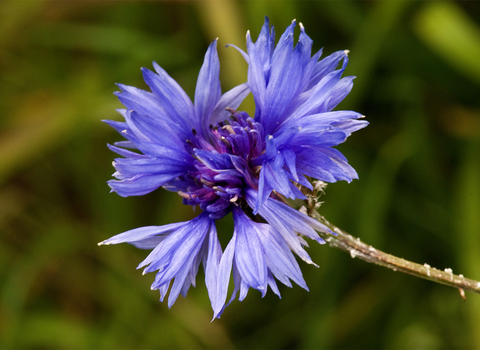
©Les Binns
©Philip Precey
Cornflower
Once considered a weed of cornfields, the cornflower was nearly wiped out by intensive agricultural practices. Today, it can be found in deliberately seeded areas, and on roadside verges and waste ground.
Enw gwyddonol
Centaurea cyanusPryd i'w gweld
June to AugustSpecies information
Category
Ystadegau
Height: up to 80cmPriority Species under the UK Post-2010 Biodiversity Framework.
